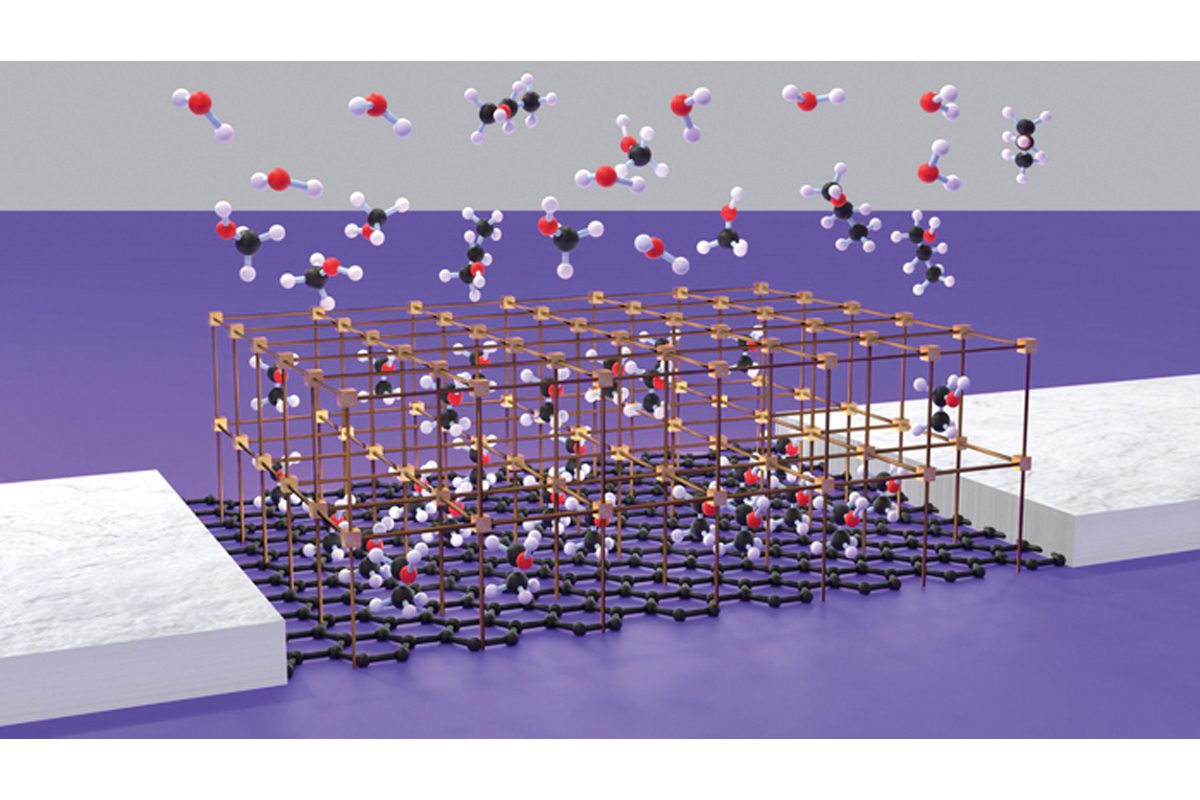An entirely new class of gas sensor seems in evidence with work recently published in Advanced Materials, which combines a graphene transistor and a customised metal-organic coating. The sensor detects molecules of ethanol with high specificity, responding to neither other alcohols nor humidity.

Graphene is a modification of carbon with a 2d structure. By nature, it is highly sensitive to foreign molecules that attach to the surface. By itself it doesn’t distinguish different types of molecules, and in order to add this ingredient of specificity, the researchers – from from Karlsruhe Institute of Technology (KIT) and Technical University of Darmstadt – have added a metal-organic coating, which was grown on the surface of the graphene.
These “metal-organic frameworks (MOFs)” consist of metallic nodes with organic molecules acting as connecting rods. By choosing various combinations, these highly porous crystalline materials can be tailored to different applications to reach a selective absorption capacity for certain molecules.
The researchers developed a selective sensor platform by growing a surface-mounted metal-organic framework (SURMOF) directly on a graphene field effect transistor (GFET). Such a component profits from the high sensitivity and simple read-out of a GFET as well as from the high selectivity of a SURMOF.
“Combining the unique electronic properties of graphene with the high chemical variability of MOFs opens up a great potential,” said Christof Wöll of KIT. As various kinds of SURMOFs can be produced and chemical designs of the interface between GFET and SURMOF may vary, the work opens up an entirely new class of sensors with a specifically adjusted selectivity and sensitivity. “Here, simulation helps,” said Wolfgang Wenzel of TU Darmstadt, “as we can create many MOFs on the computer without having to synthesize them.”








